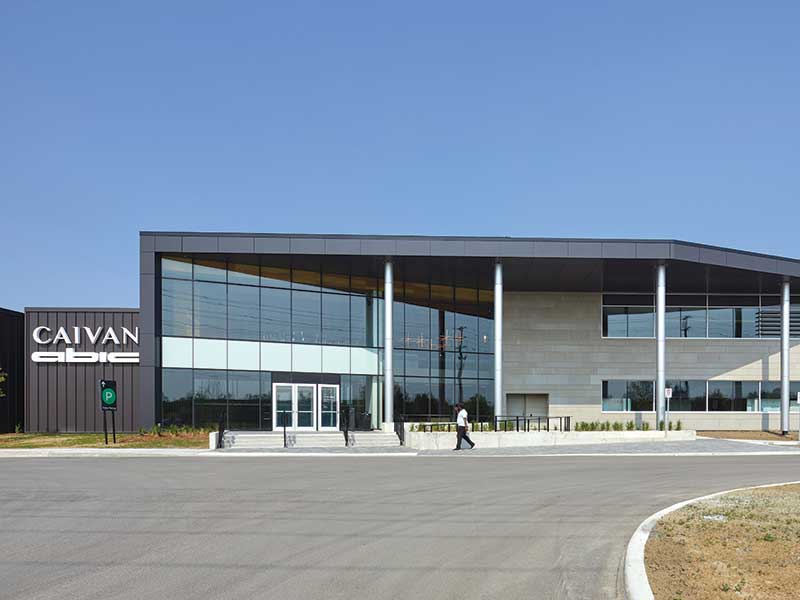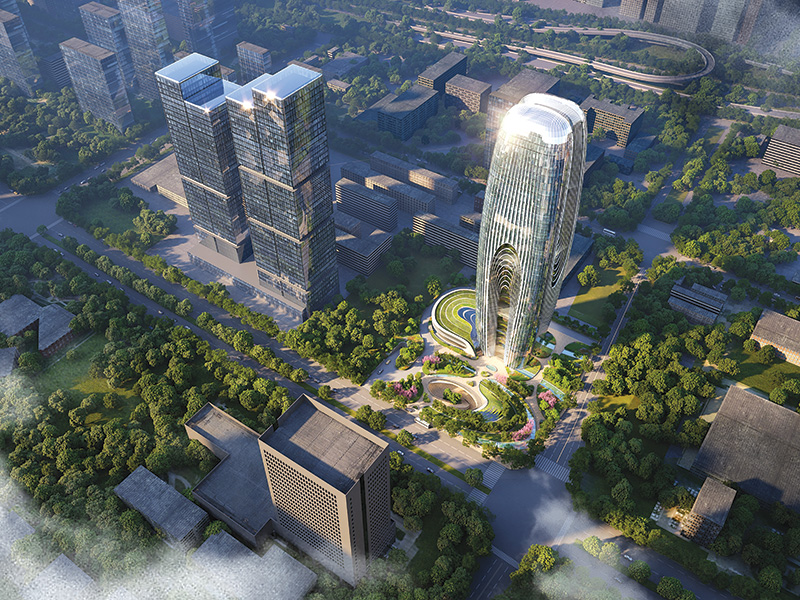
A new architectural highlight in the skyline is the new Unilever headquarters for Germany, Austria, and Switzerland. Situated right by the river Elbe and prominently positioned in Hamburg's HafenCity, the building resembles the cruise ships. The enormous transparency inside the building, generates a feeling of openness and freedom.
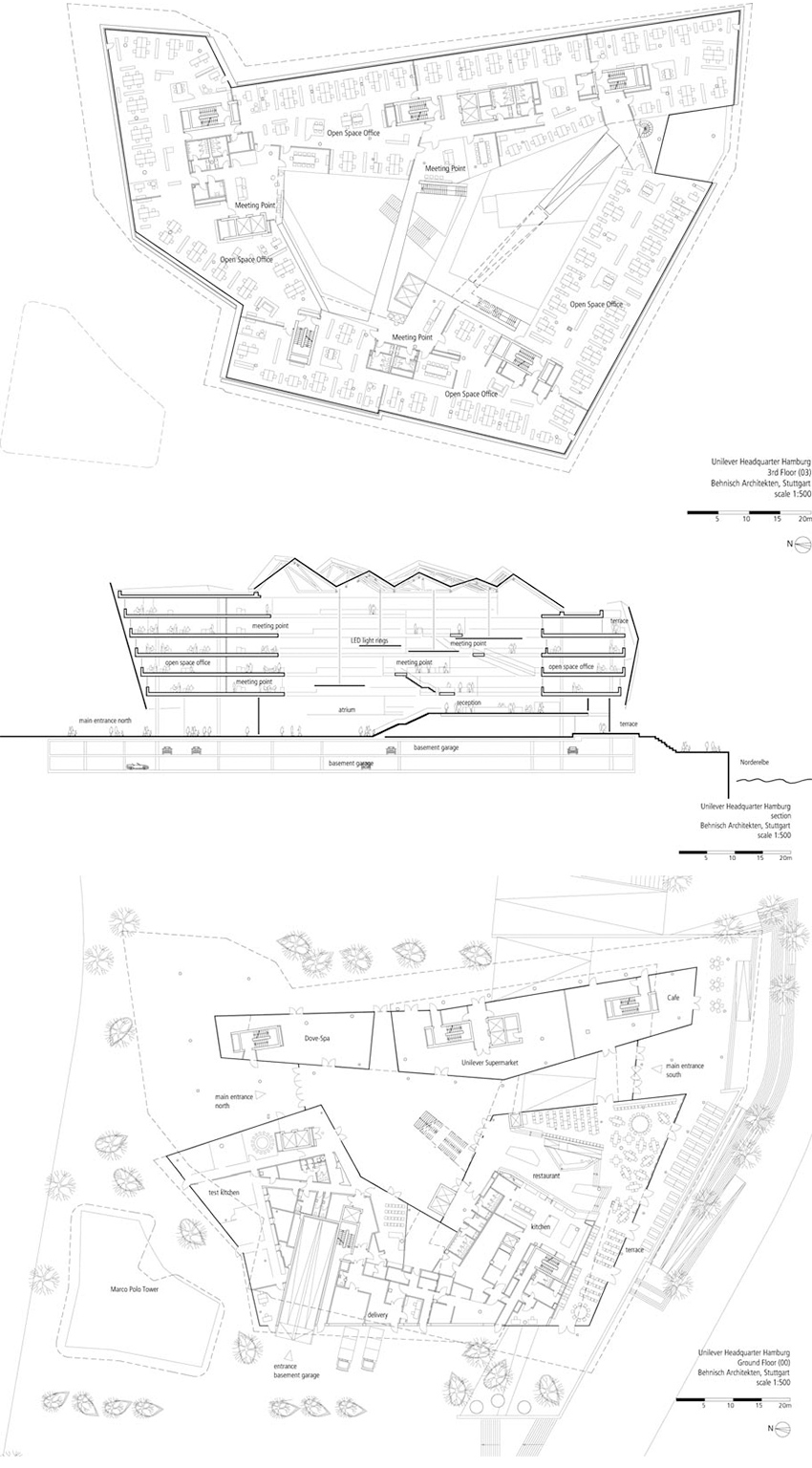
Designed by Behnisch Architekten, the central element and heart of the Unilever building is the generous atrium, flooded by daylight, which offers public amenities at ground floor level. Light streams in through generous glazed surfaces in the roof construction. The roof, which was optimized by means of light simulations, also provides the office areas with sufficient daylight. Near the central access areas around the atrium, there are open spaces looking out over the interior expanse – the Meeting Points. These serve as access to the office zones while encompassing central facilities such as copy stations and kitchenettes. The Meeting Points are connected to one another by bridges and walkways. Horizontal and vertical neighborhoods are created which are primarily intended for informal encounters. Vibrant and communicative interaction evolves, fostering a feeling of togetherness among the employees.
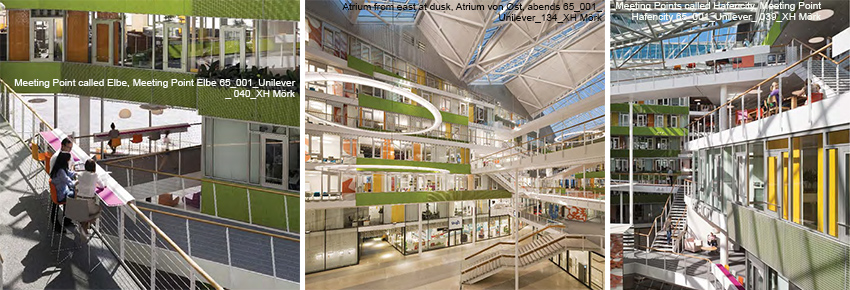
The Unilever building follows the principles of holistic, sustainable architecture. Its energy concept focuses on avoiding technical solutions, while introducing, where appropriate, technology that helps save resources. Particular attention was paid to the arrangement of the individual levels with respect to capturing a maximum amount of daylight in all areas. The building's high degree of flexibility facilitates the adaptation of use to future requirements; the layout and the arrangement of the individual areas conform to the prerequisites for optimal microclimatic conditions.
| Architect | : Behnisch Architekten |
| Location | : Hamburg, Germany |
| Client | : HOCHTIEF Projektentwicklung |
| User | : Unilever Deutschland GmbH |
| Completion | : September 2009 |
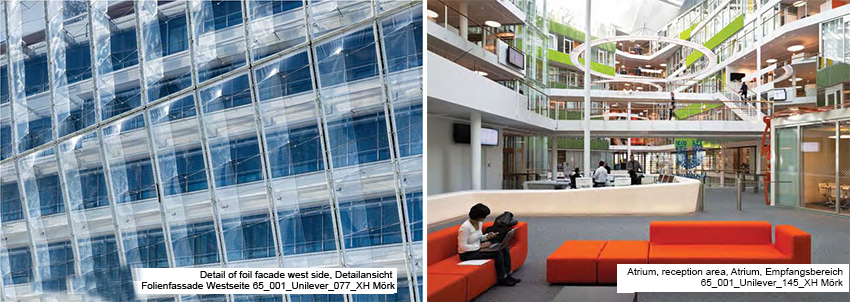
The energy concept comprises active components as well as passive measures. Due to its location right next to the cruise ship terminal, the building is exposed to diesel generator emissions from the ships that lie there at anchor. Therefore, a hybrid system was introduced for ventilation: primary ventilation is provided mechanically via a compressed air floor, whereby the air supply is fed into the office area via a filter system and from there into the atrium. Heat exchangers are located near the roof so that warmth can be recovered and no energy is lost. The office area is cooled by means of thermally activated reinforced concrete ceilings with water flowing through them. In order not to restrict the ceilings' thermal storage capacity with insulating panelling, a floor construction, which was specially designed for this project and which unites properties for both ventilation and acoustics, serves as an absorber surface for room acoustics. A single-layer film facade placed in front of the building's insulation glazing protects the daylight-optimized blinds from wind and other weather influences. Unlike a double facade made of glass, this construction does not require horizontal partitioning as a fire prevention measure. As a result, the air-filled space in the facade can be used for window ventilation of the building.
Daylight and Comfortable Temperature
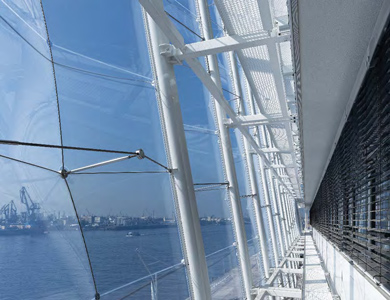
From the first storey upwards, the glass facade is protected from the rough sea air by a "plastic cocoon". Since the sophisticated cover, despite its high transparency, reduces light transmittance, the planners decided to use ipasol neutral 70/39.
The high level of light transmittance (tL = 70%) maximises the daylight transmission. Together with the "plastic sail" enclosing the building, the solar factor of 39% is sufficiently low. In the wintertime, the Ug-value of 1.1 W/m2K (as per EN 673) provides for effective heat insulation. In some parts of the building, a cold sound-insulation facade, using laminated sheet glass supplied by Interpane, provides additional protection from increased noise levels.

